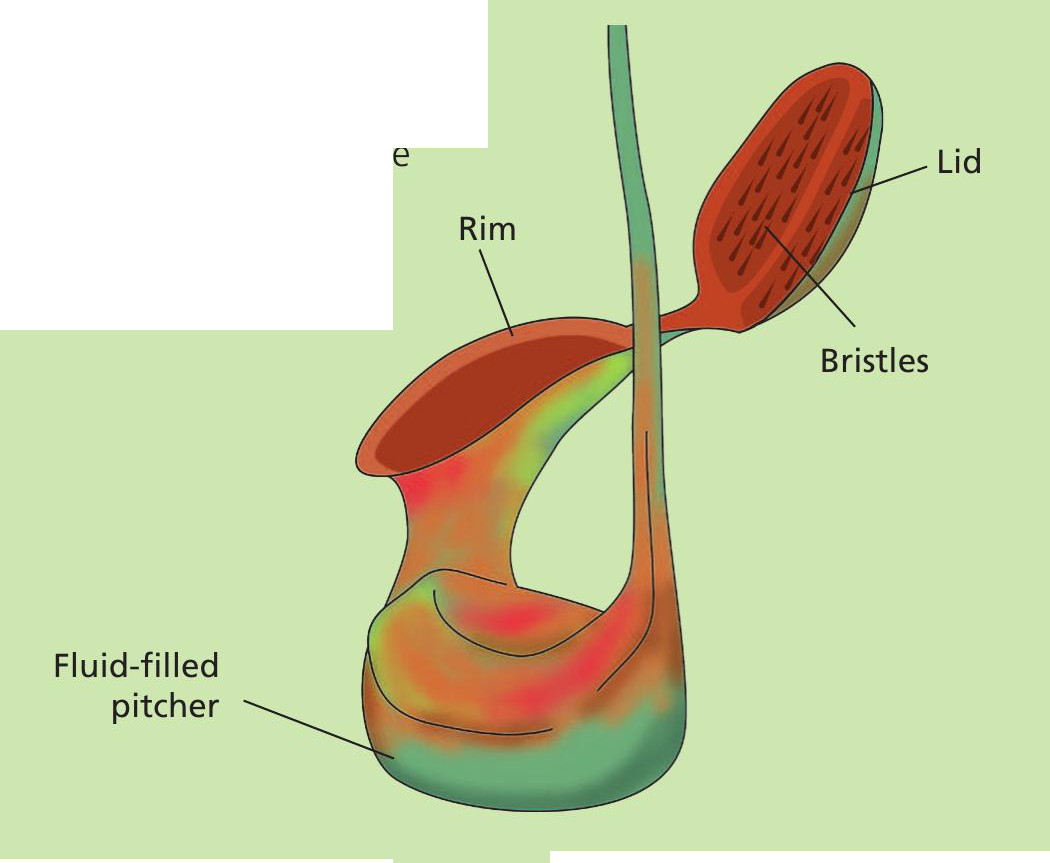
Low’s pitcher plant (Nepenthes lowii) grows in the mountains of Borneo. It grows over other plants, reaching heights of over 15 metres, but causes them no harm. The soils where it grows have few nutrients but the plant is carnivorous, so it can gain the nutrients it needs by digesting whatever falls into the modified leaves that form its pitchers. Most pitcher plants content themselves with insect prey, but Low’s pitchers lack the smooth rim and slippery walls that characterise insectnabbing pitchers. They are also larger and sturdier than pitchers that trap insects. This gives a clue Lid to the plant’s unique relationship with tree shrews.
The underside of the lid on the pitcher has many coarse bristles. White, sugary nectar is secreted between these bristles, and this attracts the tree shrews. The shrews grip the edges of the pitcher with their claws, consume the nectar and defaecate into the pitcher. The plant digests the faeces and takes in the nutrients. Of the nitrate that makes its way into its leaves, 60–100% is provided by tree shrew faeces. This relationship between the plant and its tree shrew visitors is what keeps the plant alive.
Your organisation does not have access to this article.
Sign up today to give your students the edge they need to achieve their best grades with subject expertise
Subscribe




